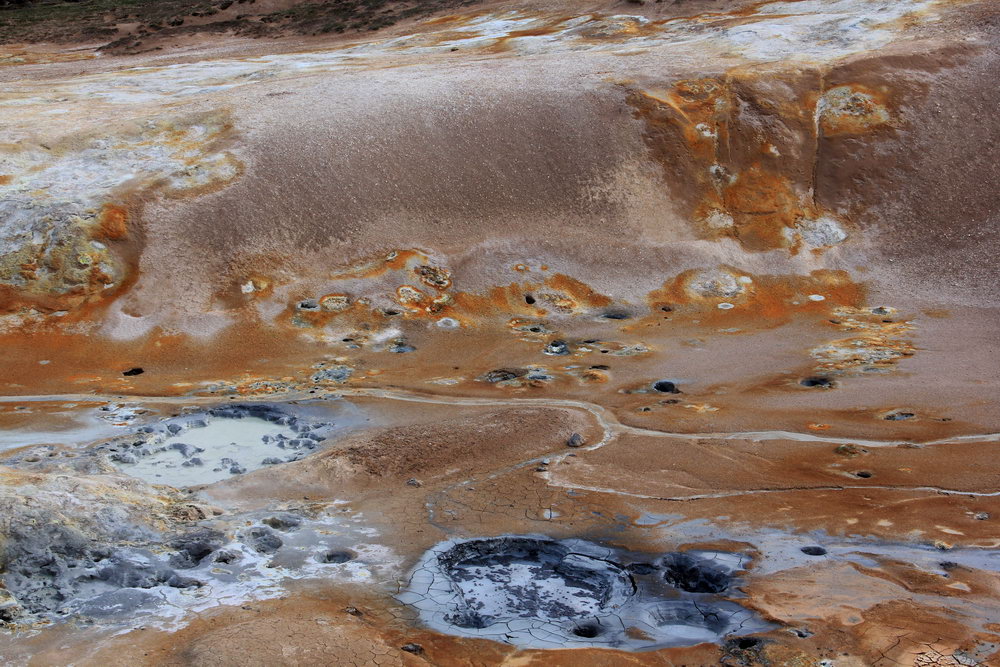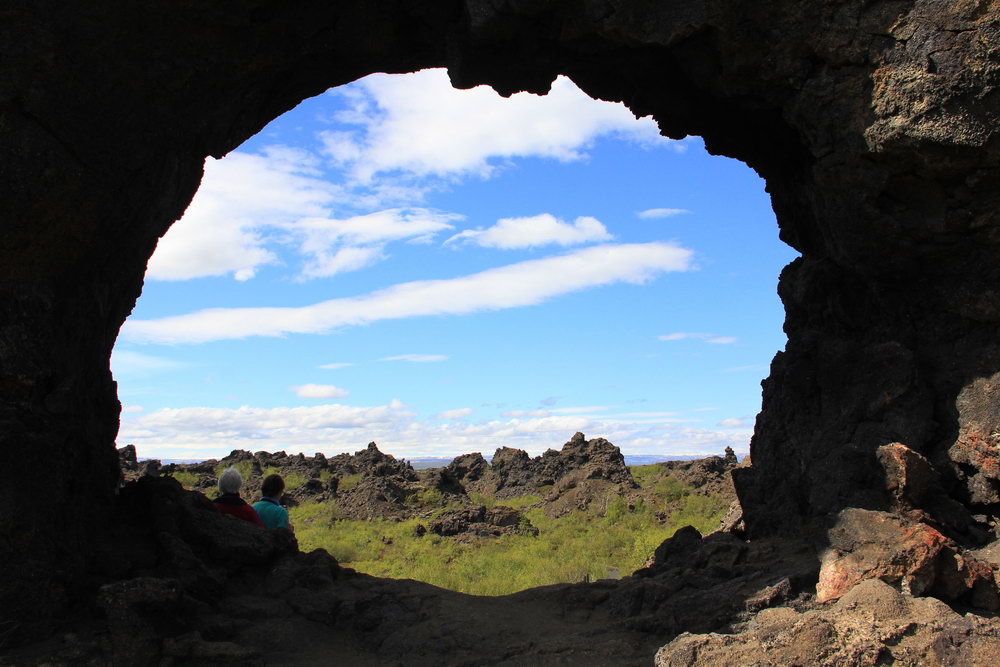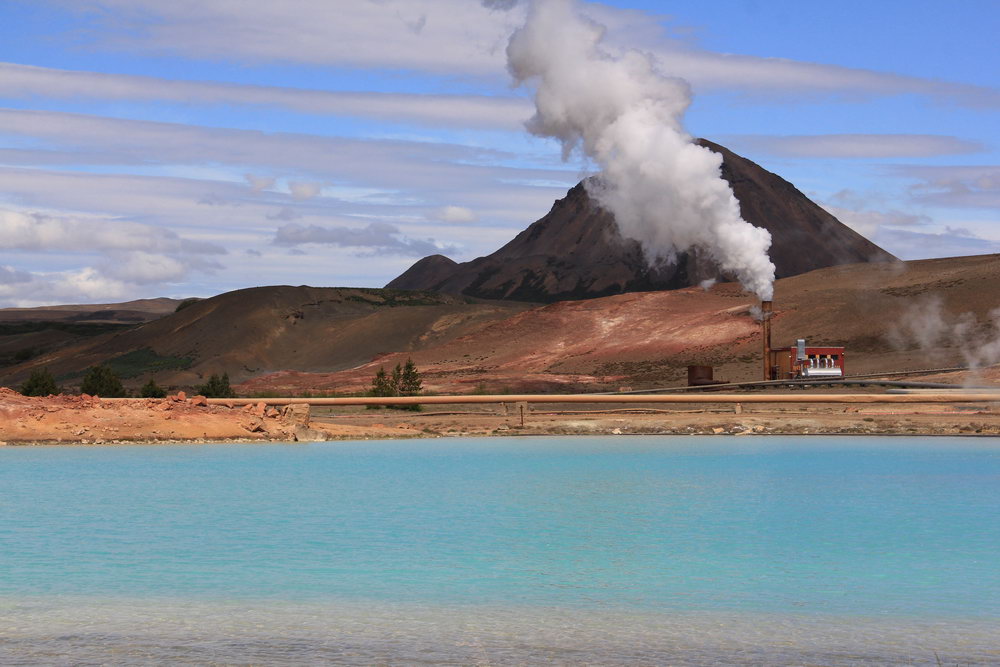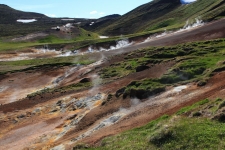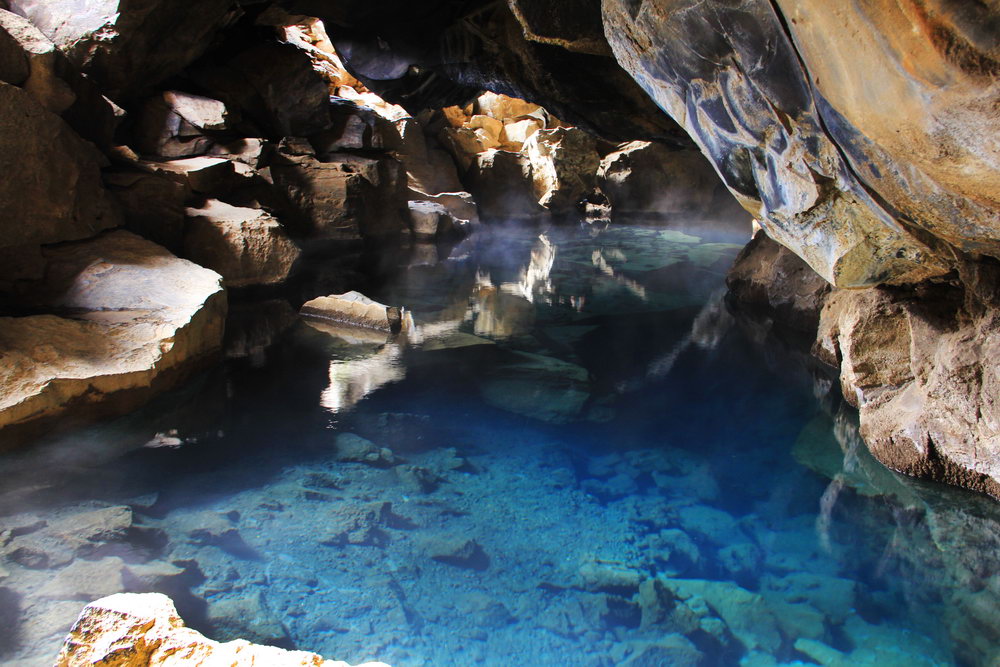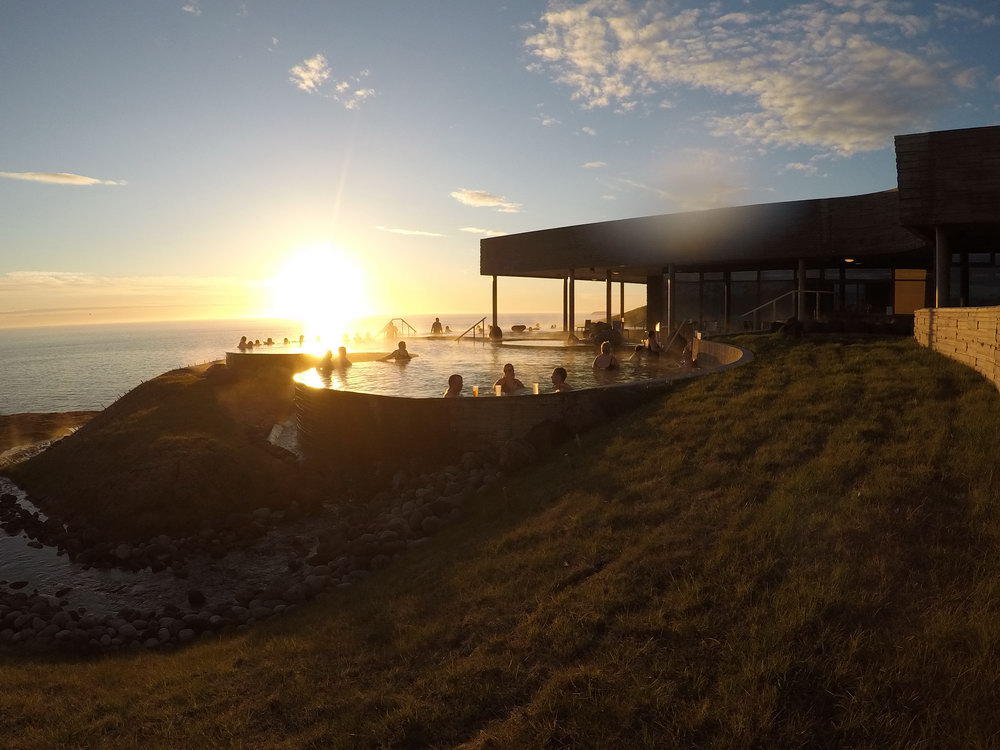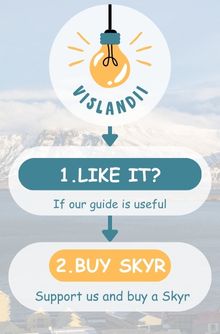A Diamond or Diamond ring is the northern version of a Golden Circle. The Diamond Ring route can be described as a magnificent route of about 260 km in the northeast of Iceland.
Attractions on the Diamond Ring route include the town of Husavik with whale safaris, Lake Myvatn, the Asbirgi Canyon, a natural gorge that is said to be the hoof of Odin Sleipnir's horse, the Joksulsharglufur Gorge, Dettifoss Waterfall on the Jokulsa Fellum River, which is the most powerful waterfall in Europe, as well as the entrance to a huge Vatnajokull Glacier Park.
Content:
- Museums on the Diamond Ring route
- Hiking
- Whale watching in Husavik
- Thermal springs on the Diamond Ring
- Horse riding
- Bird watching
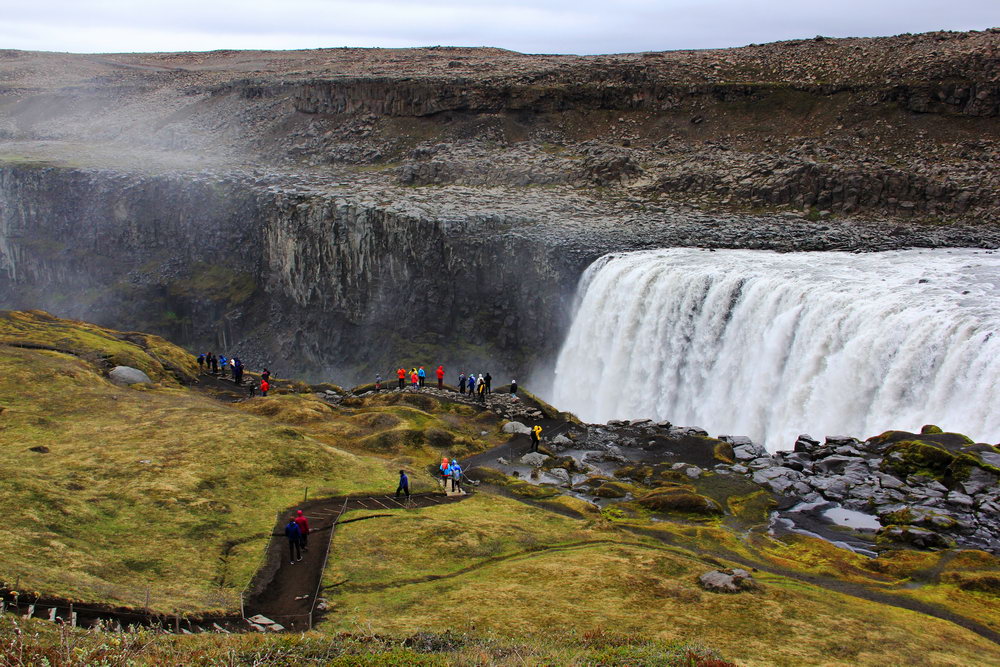
Museums on the Diamond Ring route
The Husavik Whale Museum is one of the few museums around the world dedicated entirely to whales. Tons of information about the animals that happily inhabit the bay, about the biology of whales and about the environment. In addition, the museum's collection includes full-size real whale skeletons. Among them are a humpback whale, a killer whale, two baleen whales, a narwhal and a huge sperm whale. The Whale Museum was founded in 1997 by Asbjorn Bjorgvinsson. Since then, the museum has been one of the most active institutions in the field of cetacean protection and environmental protection.
The Museum of Research - it has the opportunity to meet Vikings, polar explorers and astronauts at the same time. Have you ever thought that they can get along with you? Well, they can, and dozens of interesting artifacts and unusual stories will be waiting for you at a unique exhibition in which a star - not really a star - is a Lunar rock brought to Earth by Apollo 17. The Research Museum was established in 2014 by space enthusiast Ölygur Hnefill Ölygsson after the first idea of creating a museum dedicated exclusively to the Moon. The exhibition was expanded in 2015.
The oldest museum in Husavik is the Museum of Culture. In his rooms, the local culture manifests itself from all sides. Characteristic objects and stories from everyday life are scattered throughout the museum. The Museum of Culture was opened in 1980, and since 2002 it has hosted two permanent exhibitions: the Maritime Exhibition and the exhibition "Man and Nature".
The Fjúk Art Center is located in Husavik and includes a museum section, a gallery and a shop. But Fjúk is more than that: lots of events, a studio for local creative enthusiasts, temporary exhibitions of artists, a cinema club and a technical laboratory. The Fjúk Art Center was founded in 2014 with the aim of presenting a variety of ways to see and think.
The Sigurgeira Bird Museum is located next to Lake Myvatn, on its western shores. It is a wonderful place to discover rare wetland birds, and the museum is ideal for bird watching, providing valuable information about animals and showcasing the largest collection of birds from Iceland in a building built in traditional Icelandic turf style. The Sigurgeyr Bird Museum was opened in 2008 in honor of the collector of eggs, bird specimens and everything related to birds - Sigurgeyr Stefansson, after his death.
Grenjaðarstaður is a traditional peat extraction farm, which houses a well-preserved peat extraction site. This picturesque Folk Museum provides an opportunity to explore Iceland's rural past in the area of one of Iceland's first settlements more than a thousand years ago. The current building, in any case, dates back to the middle of the 19th century. Grenjaðarstaður was opened in 1958 and is open in summer, but in winter it invites visitors upon prior request.
The Mánárbakki Folk Museum is located in the northernmost part of the Tiernes Peninsula, in a series of traditional turf houses previously housed in Husavik, and in a more modern yellow building. The focus of the exhibition is more 20th century than other museums of this type, displaying old and funny household items. The Mánárbakki Folk Museum was opened in 1995 and is open in summer, but in winter you can also visit it by prior request. Strangely enough, the museum is believed to be a center for the study of the Northern Lights.
The Ystafell Transport Museum presents a very peculiar collection of vehicles, including milk trucks, snowmobile buses, agricultural trucks and several cars. Along with the vehicles, photos and information about the history of transportation in Iceland are presented. The Ystafell Transport Museum was founded in 1998 by mechanic Sverrir Ingolfsson and his love of cars. The museum is basically a collection of spare parts and cars.
Hiking
With a wide network of hiking trails of varying lengths and difficulty, Diamond Circle offers excellent hiking opportunities for everyone. Both those who are looking for short and easy routes, and those who want to do long and difficult routes, will find something suitable:
- The neighborhood of Husavik
- Asbyrgi Canyon (Ásbyrgi area)
- from Asbyrgi Canyon to Dettifoss Waterfall (Ásbyrgi to Dettifoss)
- The Valley of the Westerdalur (Vesturdalur Valley)
- Krafla and Leirnyukur
- Myvatn Region
- Teystarekir Geothermal Zone
Theistareykir Geothermal Zone (ÞEistareykir)
Teistarekir is a colorful geothermal area in northern Iceland, it is visited much less than the more famous geothermal areas in the north of the country - Namafyal, Kr...
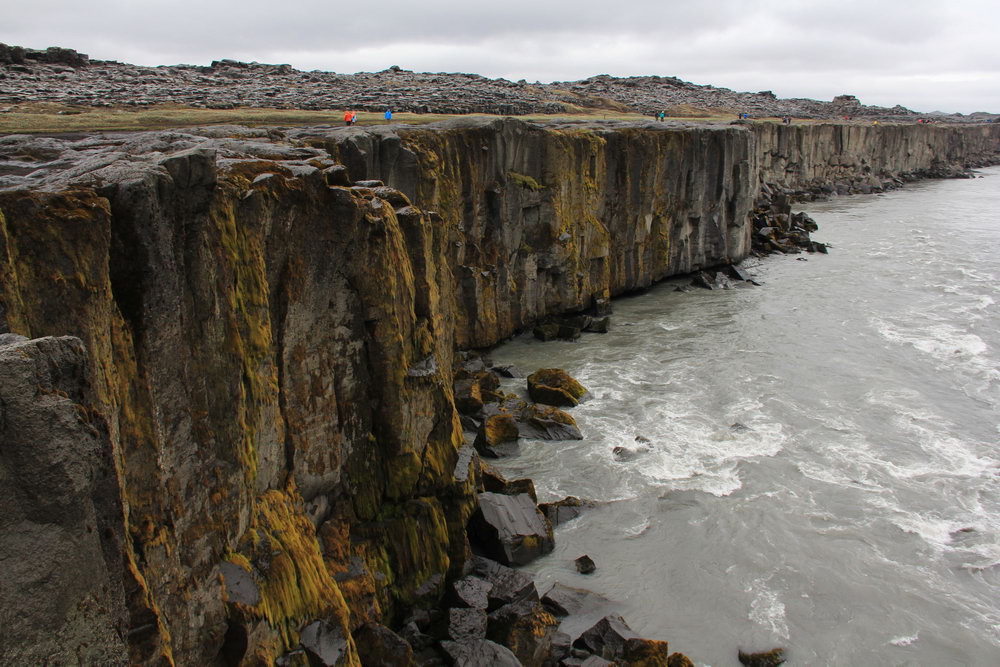
Whale watching in Husavik
Húsavík is the capital of Iceland and Europe for whale watching, and is considered one of the top 10 places in the world where you can see whales. If there's an activity you can't miss during your Diamond Circle visit, it's whale watching.
There are three whale watching tour companies in Husavik. The whale watching tour offers the opportunity to see several different species of cetaceans, including humpback whales, baleen whales, white-tailed dolphins, porpoises, blue whales, and sometimes sperm whales and killer whales. In any case, such tours offer even more: the magnificent scenery of the bay of Skjalfandi, various species of birds (puffins, Arctic terns, pomeranians) and, sometimes, visits to natural harbors.
North Sailing was founded in 1995, and it was the first company in Iceland engaged in whale watching. The North Sailing fleet includes 4 traditional oak boats (Knörrinn, Bjössi Sör, Náttfari, Garðar), 3 schooners (Haukur, Hilður and Opal) and the recently added two-masted oak vessel Donna Wood.
Gentle Giants was the second company to start offering whale watching tours in the city in 2002. The Gentle Giants fleet includes 2 traditional oak boats (Sylvía, Faldur), 2 RIB boats (Amma Kibba, Amma Sigga) and the Athena motorboat.
Salka is the company that was the last to start offering whale watching trips in Husavik in 2013. The only Salka ship is the traditional oak Fanney boat.
All whale watching operators in Husavik decided in February 2015 to adopt a Code of Conduct for Responsible Whale Watching, recently developed by IceWhale.
It is worth noting that when booking and paying online, even 1-2 days in advance, companies offer discounts of up to 10% of the cost.
Thermal springs on the Diamond Ring
Among the main Icelandic traditions there are thermal pools. They have been a part of this country since the time of settlement, and these thermal pools are a multifunctional space: for rest, relaxation, for meeting people, for communicating with friends, children, parents, partners, for new meetings.
On the Diamond Ring, the most famous thermal pool is the Jarðböðin natural baths near Lake Myvatn. Even though these are the second most popular baths among tourists after the Blue Lagoon, this does not make them the most authentic and popular among locals.
So there are several thermal baths that can be found on a Diamond ring:
- The Húsavík swimming pool is located in the city center, with a swimming pool, a children's pool, a Jacuzzi and a hot tub.
- Húsavík Cheese Tub is a few hundred meters north of the city, slightly hidden in a cliff with a breathtaking view of the Bay of Skiafandi.
- Húsavík Goldfish Pond - a few kilometers south of the city, just off the main street - is a misty pond where you can swim (if you don't mind algae).
- Laugar Pool is located in a small village between Husavik and Myvatn, in a beautiful setting.
- The Heiðarbær pool is conveniently located, open only in summer, with a swimming pool and two hot tubs.
- Reykjavik Swimming Pool - near the main village of Lake Myvatn. It features a swimming pool and hot tubs.
- GeoSee - new thermal pool in Husavik overlooking the ocean and snow-capped peaks
Horse riding
Horse riding is definitely an unforgettable experience in Iceland. The Icelandic horse is a truly unique breed of horse, and many features make horse lovers from all over the world admire them. Icelandic horses are small, almost the size of ponies, but extremely hardy and sturdy, able to traverse the steepest landscapes and withstand the harsh Icelandic weather due to their thick coat. At the same time, however, they are elegant in their movements and beautiful with their long manes fluttering in the wind, their confident and graceful gait.
The main feature of these horses is their five gaits. Together with three typical gaits - a walk, a trot and a gallop - an Icelandic horse can perform two more gaits: tölt (smooth step, a feature of this breed) and flying pace (gait for racing).
Saltvík - with the main base just a few kilometers from Husavik, they offer horseback riding in the area of Lake Myvatn and longer tours in other areas of the Diamond Circle and in the highlands.
Safarí Hestar - located on the southern shores of Lake Muvatn, they offer tours among the pseudo craters of Scutustaragigara and the surrounding lava fields.
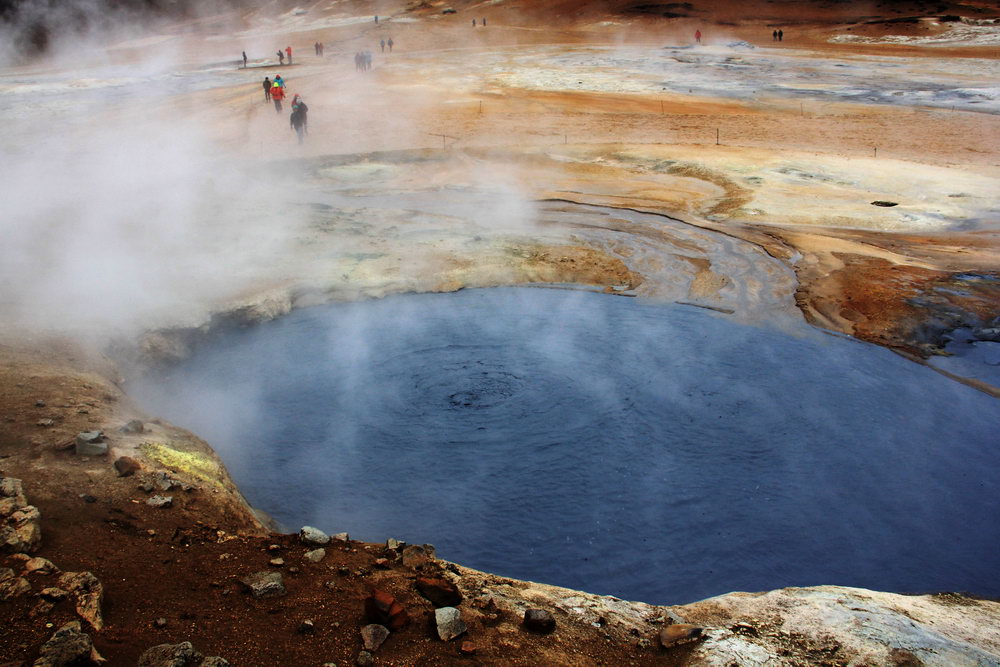
Bird watching
The diamond ring offers excellent chances to bird lovers in many of its corners, with a huge number of different bird species, some of which are extremely rare anywhere else. Check out the guide to bird trails in the northeast of Iceland.
In the vicinity of Husavik, Lake Botsnvatn and Lake Kaldbakshtarnir are excellent places for bird watching, also do not forget about the cliffs located north of the city, where you can easily spot dozens of aggressive Arctic terns among other birds. The cliffs in the bay of Skjalfandi, Ærvíkurbjarg, are also noteworthy, and so is the bay itself, and the small islands of Fleiti and Lundi play an important role in bird nesting.
The end of the Tiernes Peninsula, the Kelduhverfi area, Ásbyrgi and some other sites on the western side of the Diamond Ring often offer exciting bird encounters. The best area of the ring for bird watching is probably Lake Myvatn. Höfði in the East, Skútustaðir in the south and throughout the northwest are the best areas for bird watchers.
Of the bird species that can be observed on the Diamond Ring, a special place belongs to the world-famous puffins or puffins in Russian. Lundey has a large colony of 200,000 puffins from May to August, and the cliffs of the Voladalstorf Lighthouse are literally surrounded by nests of these clumsy and charming colorful birds.
The diagram shows much better which species can be found and where.
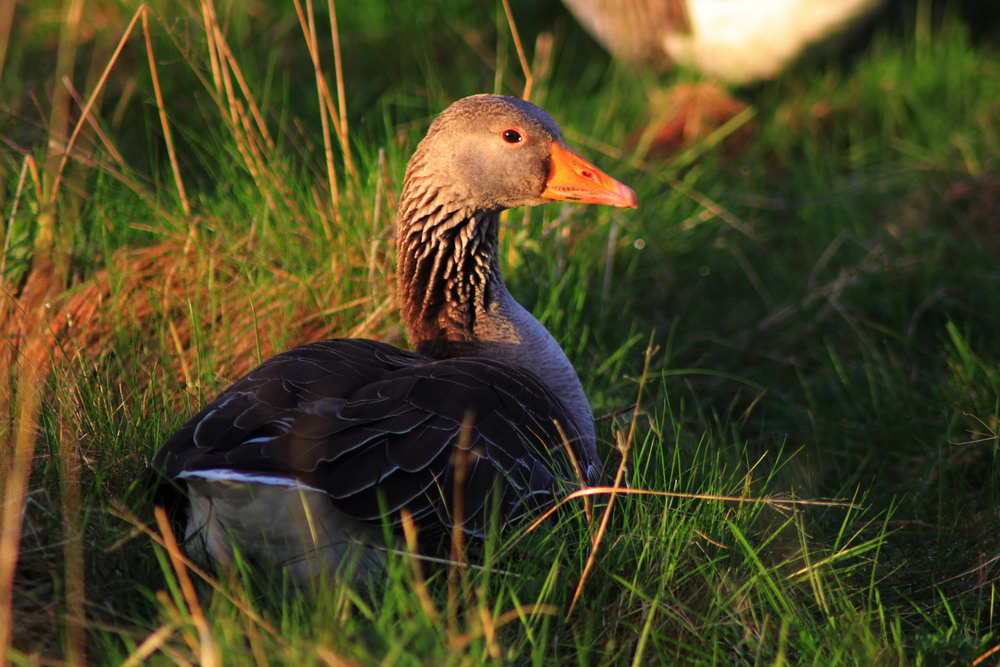
More information about the Diamond Ring can be found on the official website www.diamondcircle.is

